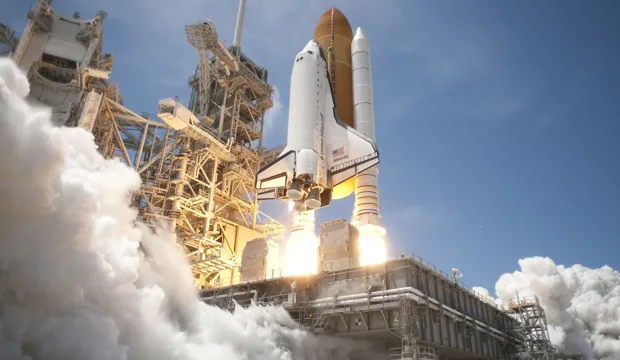
Night Stargazing – KS2 Science
Learn how to identify star constellations in the summer night sky.
The James Webb Space Telescope (JWST) can see deep into the universe, but we can see some stars even with our eyes. In this activity, learners will discover the key star constellations in the summer sky. They will learn how to use a star chart, how to use a compass to find direction and how to find star constellations.
This activity is a great way to learn about the stars and constellations in the summer sky. It is also a fun and educational way to spend an evening outdoors.
Activity: Night stargazing
This activity will introduce students to the concept of finding direction and identifying star constellations in the summer night sky.
This activity needs to be carried out after nightfall, on a clear night when the moon is not too bright – as such, it is especially suited to be carried out as a homework activity (providing there is access to a controlled, safe area to carry it out) or during any activities that are extended overnight (such as school ‘sleep-overs’ or residential trips).
What is the James Webb Space Telescope?
The James Webb Space Telescope (JWST) is the largest and most powerful telescope ever to be launched into space. It is a monumental leap in space exploration, building on the legacy of the Hubble Space Telescope. The JWST is the next great space science observatory, with a primary mission to unravel the mysteries of the universe. It will address lingering questions and achieve groundbreaking revelations across all fields of astronomy.
With its powerful infrared telescope, the JWST can see much fainter and more distant objects than the Hubble Space Telescope, including stars shrouded in dust clouds, molecules in the atmospheres of other worlds, and light from the first stars and galaxies.
The JWST is equipped with a suite of cutting-edge instruments that will allow it to study the universe in unprecedented detail. These instruments will help us better understand the Solar System, the formation of stars and planets, and the evolution of galaxies. The JWST is a revolutionary telescope that will blaze new trails in exploration. It is already making headlines with its first images, and it is sure to continue to amaze us for years to come.
Suggested learning outcomes
By the end of this activity, students will know what a star constellation is, they will be able to find North, East, South or West on a compass, and they will be able to look and identify star constellations in the summer sky.
The engineering context
Travellers have used the stars to navigate for many years. Engineers have helped by making navigational tools, such as the sextant, that use star positions to calculate a ship’s position at sea.
Download the free activity sheet below!
All activity sheets and supporting resources are free to download, and all the documents are fully editable so that you can tailor them to your students and your schools’ needs.
The activity sheet includes teacher notes, guidance, helpful web links, and links (where appropriate) to the national curriculum in the four devolved UK nations: England, Northern Ireland, Scotland and Wales.
Please share your classroom learning highlights with us @IETeducation





